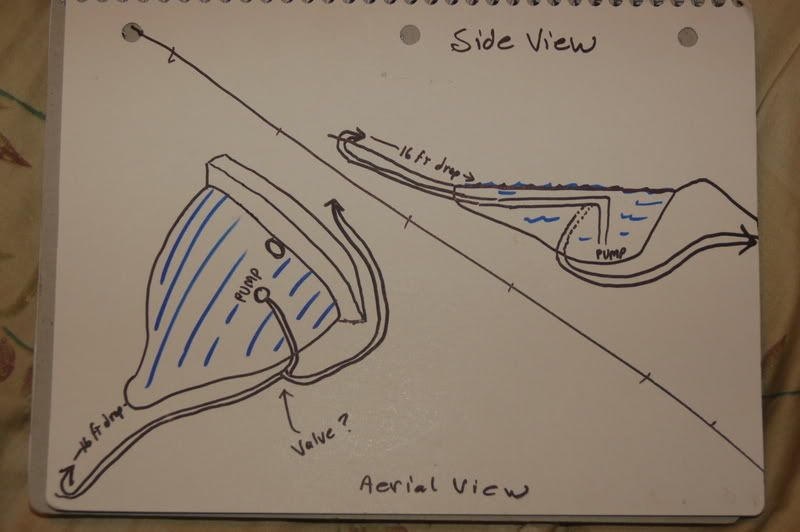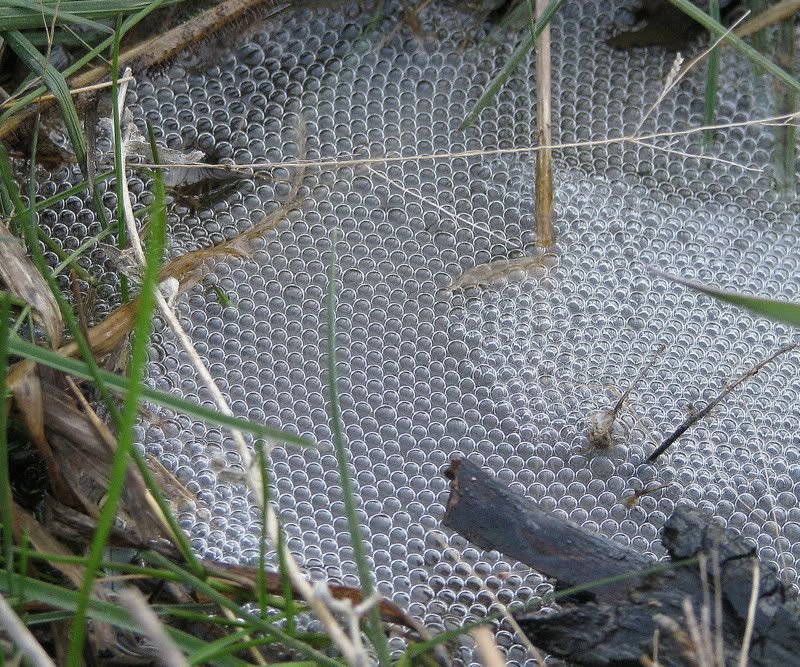My Dad's Pond - 12/16/07 06:27 PM
Last year, in it's second season my Dad's pond had some water chemistry issues that stressed the fish. In late September I had to "rescue" some of the residents when the water turned really green and smelly.
Here's a brief refresher on the parameters.
.15 acre
maximum depth 13 feet
average depth 5 feet
teardrop shaped
240,000 gallons
well-fed, with some runoff
pH 8.2
VERY fertile
Fish are fed Aquamax 600
Supports 300 pounds of fish (yeah, I know, I know)
Has previously been circulated with horizontal aeration, and had a surface agitator running at night.
I only killed a few fish (maybe 5%), but the water was rapidly getting skunky, presumably because there was an accumulation of nutrients that weren't being processed or out-flowed.
Anyway, I've been wanting from the very beginning to put a waterfall pump into this pond, mostly because my wife likes waterfalls, and I figured that I could put a pump on the bottom and bring the worst bottom water out and aerate and process it. I'm pretty much committed to a pump that will do around 8-10,000 gph, and maybe 5,000 gph with 16 elevation.
Here's my idea. I'd like to figure out a way that the pump runs 24 hours a day, but that it's pumping to the waterfall from 7 pm to 5:30 pm, then during the other ninety minutes it would be discharging out the other side of the dam. This would allow me to put in about 600 gph of fresh well water every day. I'm about to post a picture, and hopefully get an idea from somebody on the engineering aspect of the valve.
Here's a brief refresher on the parameters.
.15 acre
maximum depth 13 feet
average depth 5 feet
teardrop shaped
240,000 gallons
well-fed, with some runoff
pH 8.2
VERY fertile
Fish are fed Aquamax 600
Supports 300 pounds of fish (yeah, I know, I know)
Has previously been circulated with horizontal aeration, and had a surface agitator running at night.
I only killed a few fish (maybe 5%), but the water was rapidly getting skunky, presumably because there was an accumulation of nutrients that weren't being processed or out-flowed.
Anyway, I've been wanting from the very beginning to put a waterfall pump into this pond, mostly because my wife likes waterfalls, and I figured that I could put a pump on the bottom and bring the worst bottom water out and aerate and process it. I'm pretty much committed to a pump that will do around 8-10,000 gph, and maybe 5,000 gph with 16 elevation.
Here's my idea. I'd like to figure out a way that the pump runs 24 hours a day, but that it's pumping to the waterfall from 7 pm to 5:30 pm, then during the other ninety minutes it would be discharging out the other side of the dam. This would allow me to put in about 600 gph of fresh well water every day. I'm about to post a picture, and hopefully get an idea from somebody on the engineering aspect of the valve.





